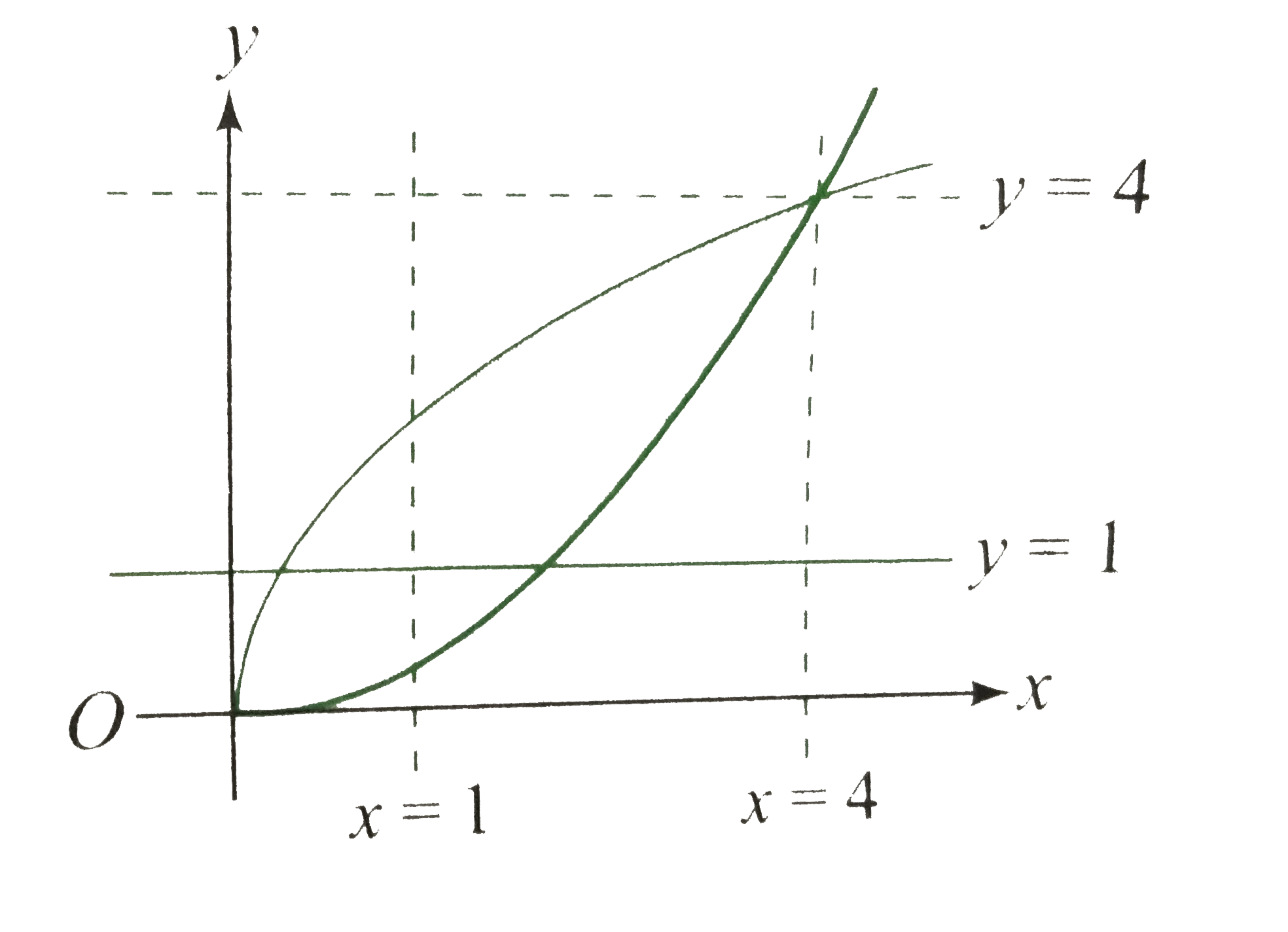Consider two curves C1:y2=4[√y]xandC2:x2=4[√x]y, where [.] denotes the greatest integer function. Then the area of region enclosed by these two curves within the square formed by the lines x=1,y=1,x=4,y=4 is 83sq.units (b) 103sq.units 113sq.units (d) 114sq.units
8/3 sq. units
10/3 sq. units
11/3 sq. units
11/4 sq. units
The correct Answer is:C
y2=4[√y]x
For y∈[1,4),[√y]=1ory2=4x.
Similarly, for x∈[1,4),[√x]=1 and
x2=4[√x]y would transform into x2=4y

The required area is the shaded region.
A=2∫0(2√x−1)dx+4∫2(2√x−x24)dx
=(43x3/2−x)21+(43x3/2−x312)42=113 sq. units
Topper's Solved these Questions
- BOOK - CENGAGECHAPTER - AREAEXERCISE - Exercise (Multiple)10videos
AREA
- BOOK - CENGAGECHAPTER - AREAEXERCISE - Exercise (Comprehension)21videos
AREA
- BOOK - CENGAGECHAPTER - AREAEXERCISE - Exercise 9.37videos
AREA
- BOOK - CENGAGECHAPTER - APPLICATIONS OF DERIVATIVESEXERCISE - Question Bank29videos
APPLICATIONS OF DERIVATIVES
- BOOK - CENGAGECHAPTER - AREA UNDER CURVESEXERCISE - Question Bank20videos
AREA UNDER CURVES
Similar Questions
Knowledge Check
- Question 1 - Select One
The area of the region (s) enclosed by the curves y=x2andy=√|x| is
A1/3B2/3C1/6D1
The area of the region enclosed between the curves x=y2−1andx=|y|√1−y2 is 1sq.units (b) 43sq.units 23sq.units (d) 2sq.units
View SolutionThe area bounded by the curve a2y=x2(x+a) and the x-axis is a23sq.units (b) a24sq.units 3a24sq.units (d) a212sq.units
View SolutionThe area bounded by the two branches of curve (y−x)2=x3 and the straight line x=1 is 15sq.units (b) 35sq.units 45sq.units (d) 84sq.units
View SolutionThe area of the region bounded by x=0,y=0,x=2,y=2,y≤exandy≥1nx is 6−41n2sq.units (b) 41n2−2sq.units 21n2−4sq.units (d) 6−21n2sq.units
View SolutionThe area bounded by the curve f(x)=x+sinx and its inverse function between the ordinates x=0andx=2π is 4πsq.units (b) 8πsq.units 4sq.units (d) 8sq.units
View SolutionThe minimum area of circle which touches the parabolas y=x2+1 and y2=x−1 is 9π16sq.unit (b) 9π32sq.unit 9π8sq.unit (d) 9π4sq.unit
View SolutionLet f(x)=minimum(x+1,√1−x) for all x≤1. Then the area bounded by y=f(x) and the x-axis is
View Solution

